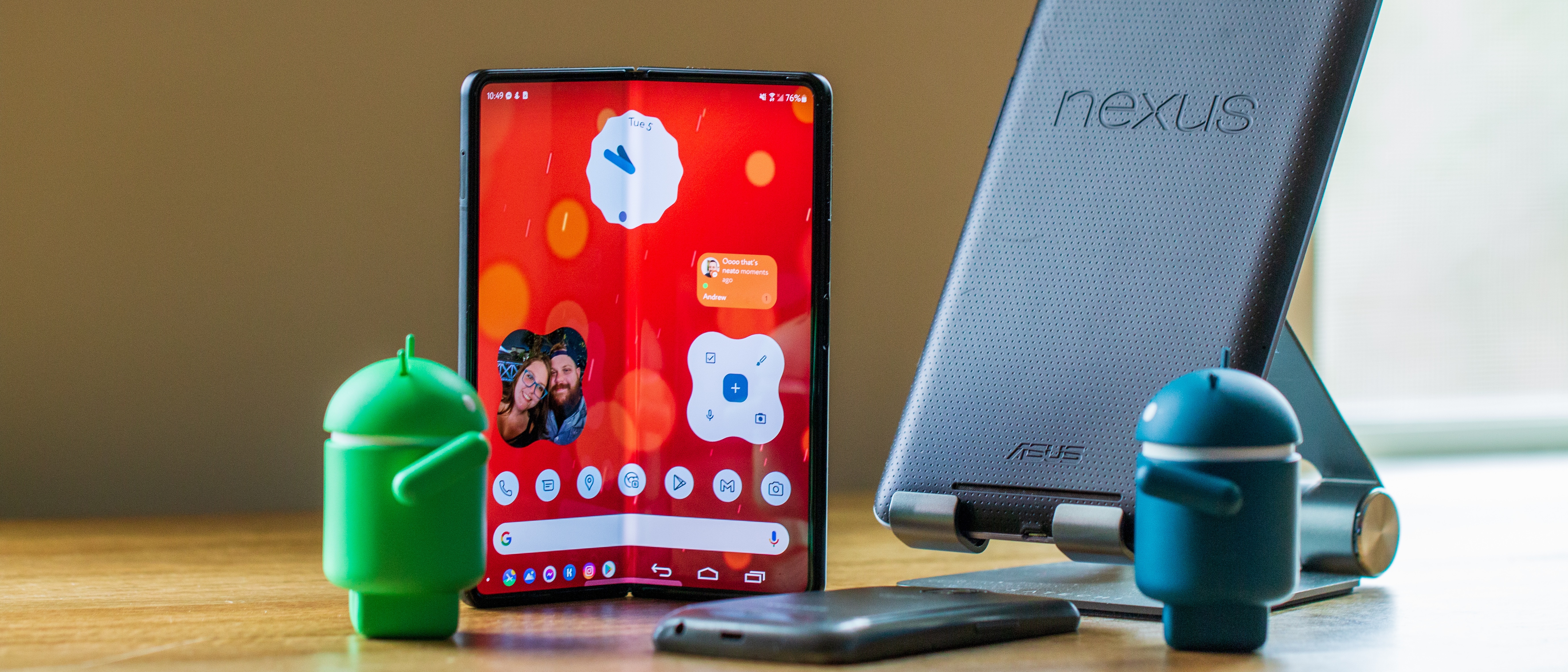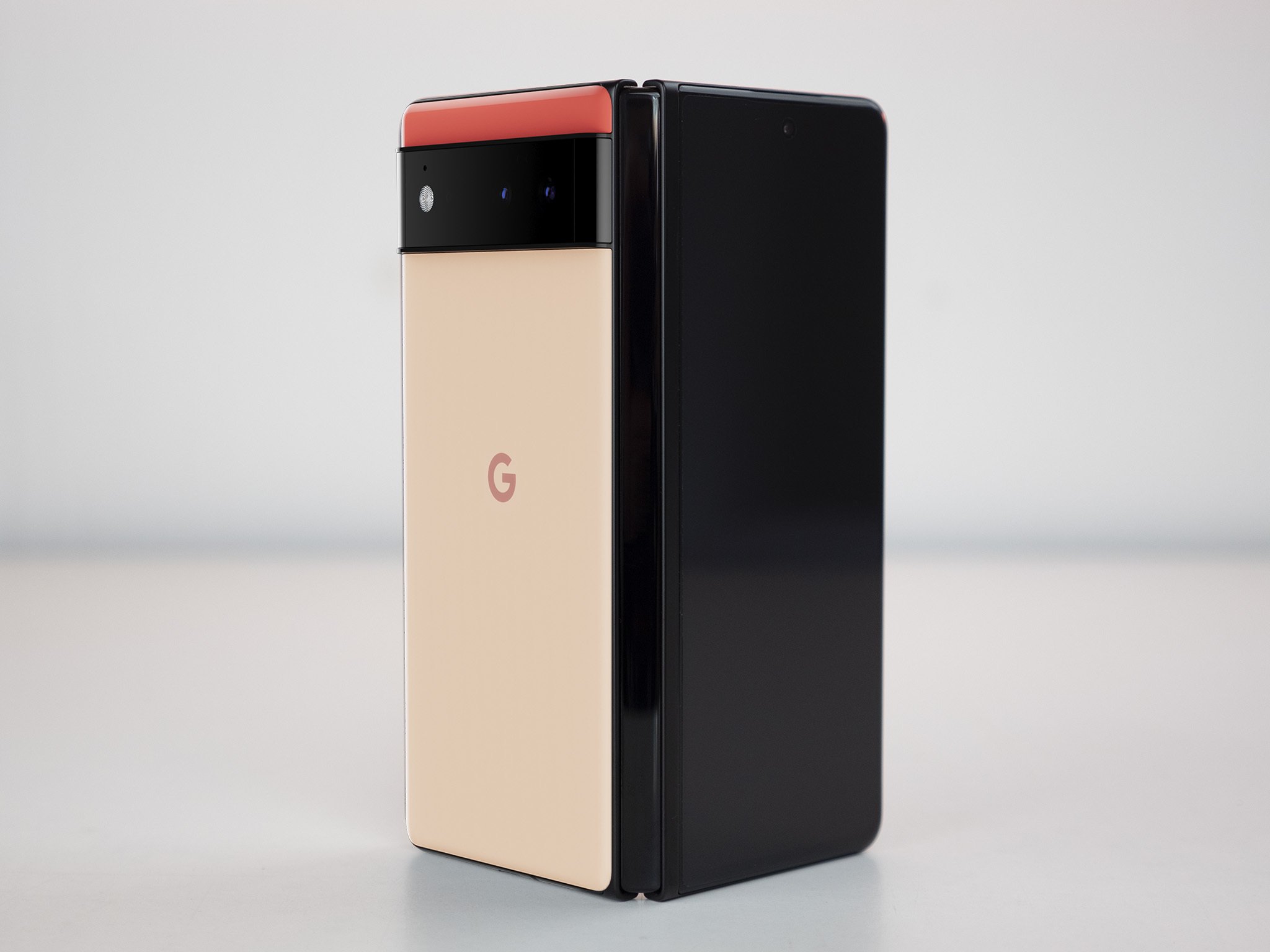The Pixel Fold should be the Galaxy Z Fold 3 Play Edition
It might be time to bring back the Google Play Edition

If it wasn't obvious by now, I'm a big fan of foldable phones and have owned the Galaxy Z Fold 2, Z Fold 3, and even the Galaxy Z Flip 3 (for a brief time). But there's one foldable phone that I want more than anything that Samsung could offer: the Google Pixel Fold.
We've seen a bunch of rumors and speculation regarding what the Pixel Fold or Pixel Passport could bring. This includes using the same display that Samsung has used on its Fold 2 and Fold 3 and using the Google Tensor chip that powers many of the features found in the Pixel 6 and 6 Pro.
But what if the Pixel Fold re-introduced the beloved Google Play Edition phones from the good ole days?
I'm worried about Google's hardware development

It's no secret that Google has a history of playing it safe when it comes to hardware design. The Pixel 6 series shocked many, including myself, as it was a complete departure from the more muted looks we've seen in the past. This was definitely a great move, as the cyborg camera bar is just cool to look at and helps your phone stand out from a crowd of otherwise-boring slab phones.
And yet because of its past decisions, I have to admit that I'm a bit concerned about what a Pixel Fold would actually look like. On one hand, you would have to think it would more similar to a Pixel 5a as opposed to the Pixel 6, meaning that the camera bar would be gone.
I'm worried about Google's hardware design plans for its rumored Pixel Fold.
I'm fine with muted color selections on a foldable, but then there's the whole debacle that we've seen with the internals on the Pixel 6. Things like your Wi-Fi or Bluetooth not working correctly just isn't acceptable in a phone, let alone one that could cost around $1,400 or more.
Introducing: The Google Play Edition Z Fold 3

I think Google's best bet to have a successful first foldable phone with "stock" Android 13 would be to re-introduce the Google Play Edition (GPE) program. GPE devices were originally announced way back in 2013 alongside the release of Android 4.2 Jelly Bean. Their most important contribution to Android was that GPE devices gave users the ability to pair premium, non-Nexus hardware with clean Nexus software. It's something that many of us continue trying to achieve by using things like custom third-party launchers, KWGT widgets, icon packs, and much more on our non-Pixel phones.
Get the latest news from Android Central, your trusted companion in the world of Android
Now, you might be wondering why I didn't suggest a GPE Z Fold 4. And the truth is that if this phone has been in development for at least a year, the chances are that Google wouldn't be able to adopt whatever hardware changes Samsung has in the pipeline. Recent rumors suggest a redesigned hinge which will be more durable while hopefully reducing the size of the crease on the Z Fold 4. Google is simply too far along, at this point, to be able to wait around for the hardware.
A GPE Z Fold 4 is probably out of the question, but a Play Edition Fold 3 would be a great place to start.
But that's where the lines begin to get a bit blurry. With the old Google Play Edition phones from yesteryear, Google didn't have to build a device from scratch. Instead, it worked with smartphone makers to bring stock Android to devices that had already been manufactured and released. This concept could definitely work in Google's favor, as a GPE Fold would include S Pen support, along with Samsung's camera hardware and general design.
Just imagining the combination of the Galaxy Z Fold 3's camera hardware with Google's software prowess is the dream. Being able to take advantage of the changes coming via Android 12L and Android 13 on a foldable Pixel device gives me more excitement than words can explain.
What we'll probably, actually, see
In the leaks and rumors that have appeared up to this point, this is what the Pixel Fold is shaping up to offer:
- Display: 7.6-inch foldable panel w/ 120Hz refresh rate
- Processor: Google Tensor (or Tensor 2)
- RAM: 12GB
- Storage: 128GB / 256GB / 512GB
- Front Camera: 8MP IMX335 (Cover Screen)
- Inner Display Selfie: 8MP IMX335
- Rear Cameras: 12.2MP IMX363 (Main) / 12.2MP IMX386 (Ultra Wide)
- Price: ~$1,400
The spec sheet reads just like you would expect, considering that Google has reportedly tapped Samsung for the display. And it would be extremely odd if Google decided to backtrack from its Tensor chip in favor of the Snapdragon 8 Gen 1 from Qualcomm. The camera hardware isn't even all that exciting, as these are the same sensors found in the likes of the Pixel 5a and older Pixel phones.
I understand that Google is going to play it safe here, as it's already let other phone makers work out the kinks when it comes to foldable phones. I also understand that this is still something that may not actually ever come to fruition, much like the fabled Pixel Watch that is supposedly coming this year.
What I'm really keeping my fingers crossed for is for Google to come out and absolutely blow everyone away. It's clear that Google is finally putting some focus and effort into the Android experience on larger-screened devices, including tablets and foldables. But, if Google really wants to show the world that it's taking things seriously, then we need to see some hardware to go with it.
A Google Play Edition foldable would spark excitement for long-term Android enthusiasts.
Samsung and Google have already been working closely together in recent years. Now it's time for things to get taken to the next level. A Google Play Edition foldable would spark excitement for the long-term Android enthusiasts while potentially opening the door to even more innovation in the foldable space.

Andrew Myrick is a Senior Editor at Android Central. He enjoys everything to do with technology, including tablets, smartphones, and everything in between. Perhaps his favorite past-time is collecting different headphones, even if they all end up in the same drawer.
